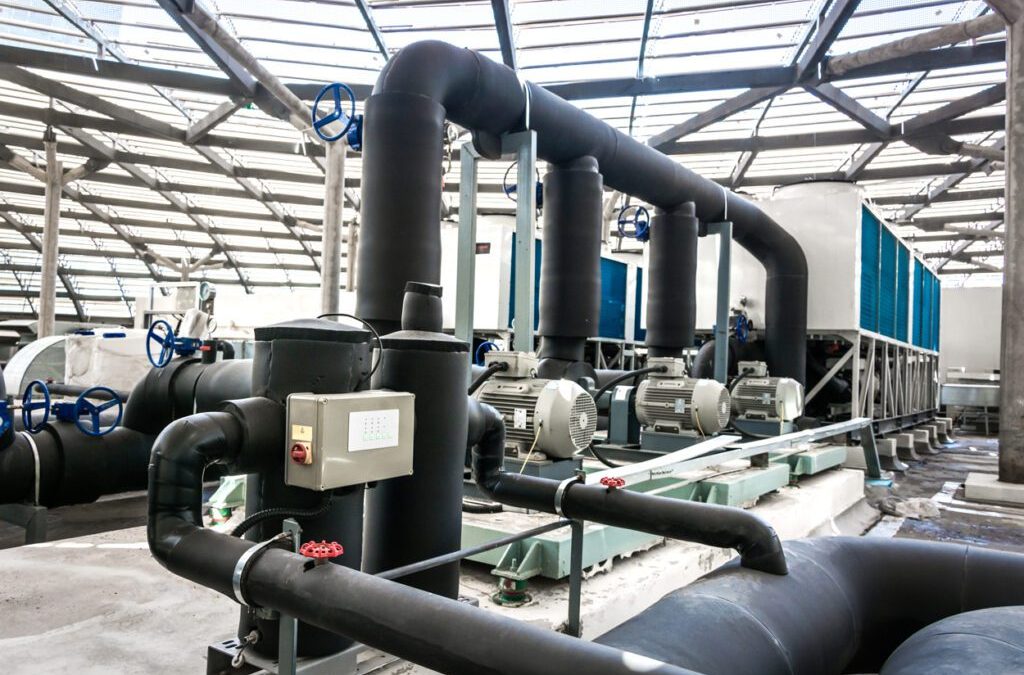VRF systems can adapt to changing conditions and provide optimum energy efficiency while preserving the highest level of comfort in various zones thanks to each of these operating modes. The functions uses, benefits, and complexities of each of these three modes in VRF systems will be discussed in this article.
Cooling Mode:
The VRF system’s primary function in Cooling Mode is to lower a building’s temperature by transporting heat outdoors from indoor areas. In warmer climates or where prolonged cooling is necessary, this mode is most frequently utilised.
· How the Cooling Mode Operates:
Through the system’s piping network, which links the outside unit (or units) to numerous indoor units positioned in various building zones or rooms, the VRF system circulates refrigerant. The refrigerant transfers heat from the interior air to the exterior unit when it is in Cooling Mode. Here, the outdoor condenser coils release the heat into the atmosphere.
The capacity to precisely cool different areas of the building is one of the benefits of using VRF technology in Cooling Mode. Each indoor unit used by a VRF system can be separately controlled, enabling customised comfort in every space. Energy efficiency is ensured by the outside unit’s inverter-driven compressors, which modify the refrigerant flow according to each zone’s cooling requirement. This is especially important since certain areas of the building could need more cooling than others.
· Uses and Advantages:
The most common places for Cooling Mode are office buildings, shopping malls, hotels, and residential structures. VRF systems work well in buildings with multiple zones with different cooling needs, like offices with variable occupancy levels or rooms with various levels of direct sunlight, because they are made to handle multi-zone applications. For buildings that need reliable, energy-efficient cooling, the system is extremely advantageous.
Heating Mode:
The VRF system’s Heating Mode provides warmth to interior spaces by reversing the normal cooling cycle. In regions with varying seasonal temperatures or during the winter months, this option is especially helpful. The technology raises the temperature within the structure by drawing heat from the outside air and transferring it indoors rather than releasing it outdoors.
· How the Heating Mode Operates:
In a VRF system, the Heating Mode works based on reverse cooling. As opposed to operating in Cooling Mode, the outside unit’s heat pump operates in reverse. Rather than extracting heat from the structure to cool the air, the system directs heat from the outside air—even in cold weather—into the interior. By reversing the refrigerant flow, the system’s network of interior units can spread the heat and warm the different areas of the building.
VRF systems’ sophisticated inverter-driven compressors and heat pump design allow them to maintain efficient heating even in cold weather. To further improve energy efficiency, the system dynamically modifies refrigerant flow to guarantee that the proper quantity of heat is delivered where it is needed.
· Uses and Advantages:
Buildings in colder climates or locations where heating is required all winter long are best suited for Heating Mode. Residential structures, workplaces, educational institutions, and retail establishments with varying heating requirements are frequently equipped with VRF systems in Heating Mode.
Heat Recovery Mode:
Perhaps the most sophisticated and distinctive aspect of VRF systems is the Heat Recovery Mode. In this mode, the system can chill some zones and heat others at the same time. It is especially helpful in buildings with different heating and cooling needs, like offices with parts that need to be heated simultaneously and others that need to be cooled.
· The Operation of Heat Recovery Mode:
To provide simultaneous heating and cooling in various zones, the VRF system’s Heat Recovery Mode makes use of a unique valve and refrigerant piping architecture. For the system to function, heat must be transferred from parts that require cooling to areas that need warming. By reusing heat that would otherwise be lost, this technique makes Heat Recovery Mode extremely energy-efficient.
In an office building, for instance, some rooms—like those facing the sun—might be overly warm and need to be cooled, while other rooms—like those in a shaded location or away from the sun—might require heating. By adjusting the refrigerant flow to simultaneously satisfy both demands, the VRF system can prevent energy waste and ensure building comfort.
· Uses and Advantages:
In big office spaces, hotels, hospitals, and commercial buildings where multiple regions have simultaneous heating and cooling needs, Heat Recovery Mode is quite helpful. This mode reuses heat rather than using separate heating and cooling equipment, maximising the VRF system’s overall energy efficiency.
Frequently Asked Questions:
1. Can I Do My Refrigerant Refill?
Refilling refrigerant calls for certain equipment, expertise, and adherence to environmental standards. DIY refilling is not advised since incorrect handling may result in system damage, safety risks, or legal problems. When handling refrigerant, always get a licensed HVAC professional.
2. How Frequently Should One Replace Or Refill Refrigerant?
In a sealed system, the refrigerant levels should ideally stay constant over time. Low levels suggest a leak that has to be fixed. Frequent refills are an indication of a major problem with your air conditioner. Leaks should be fixed right away to prevent environmental damage and lost efficiency.
3. How Can I Determine Whether A Newer Refrigerant Is Compatible With My Air Conditioning System?
Your AC system’s design determines compatibility. Because R-410A and R-32 have different operating pressures and chemical characteristics, systems made for R-22 cannot use them directly. Retrofitting may be feasible, but it has to be evaluated by a specialist. When looking at compatibility choices, always get advice from an HVAC technician.


